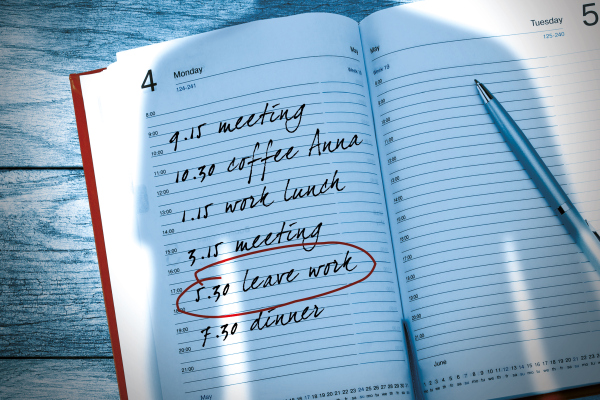Whether it’s a headdress and sarong in some parts of the world or a sharp suit in others, most cultures have at least informal rules about dress codes, and those who stray from what is considered acceptable can suffer for their non-conformity. This is illustrated starkly by the recent ‘pyjama shoppers’ who caught the attention of much of the national media1 – two women who were lambasted for daring to venture into their local Tesco, clad in PJs and dressing gowns. They broke a cardinal rule in our culture: that of wearing ‘private’ clothing in a public arena.
While few of us would don our best onesie for the office, workplace dress codes can seem a little ambiguous at times and thus it is still possible to get it horribly wrong. The cultures where suits are the norm, are perhaps the easiest to negotiate (especially for men), but what about the potential minefield of ‘dressdown’ Friday? Or that rare stifling summer day? And what about workplaces where ‘casual-smart’ is the norm (whatever that means) or even simply just ‘casual’ – can you really show you mean business dressed in torn jeans and a hoody?
Thanks to a number of legal cases that have been highlighted in the media, appearances and dress codes in the workplace are becoming more of an issue than ever before. Many workplaces have dress codes that can appear to be sexist (high heels) or even racist (no headwear) and, unless there is good reason for these rules, such as health and safety, employers can get into trouble for them.
The old adage about dressing for the job you want, rather than the one you have, is probably still good advice today – up to a point. The problem is that sharp suits no longer always signify real power. In today’s society, it is sometimes the case that the most important people are the ones wearing the most casual gear, as illustrated by the late Apple founder, Steve Jobs, who famously wore exactly the same blue jeans, black polo neck and trainers every day for work. When you are that powerful, you can go dressed for comfort rather than to impress, but this is not a strategy that most ordinary workers can afford to emulate.
While copying Steve Jobs’ style might not work for us all, emulating his strategy of a ‘uniform’ is probably cognitively useful; not having to waste brain space deciding what to wear each day can be a boon. Apparently, Albert Einstein did just that (a grey suit, rather than jeans) as did former US President Barack Obama, who claims to only wear grey or blue suits.2 Mark Zuckerberg, CEO of Facebook, too, ascribes to this policy, owning around 20 identical grey T-shirts.
What all of these successful people, and others, have in common is the limitations of the colour palette they choose; many people choose to dress in all black, grey or a combination of the two. Bright, ‘loud’ clothes, tops with slogans or other eye-catching attire do not seem to be the garb of choice for those at the top.
Of course these examples are all men. Women and dress code is a bigger issue, illustrated nicely by the recent case of the receptionist sent home from work for refusing to wear high heels.3 And never has there been such interest in a Prime Minister’s wardrobe since Theresa May came into power (except perhaps when Margaret Thatcher was in Downing Street). By choosing colour, heels and pussy-bow blouses, May is sending a clear message that it is OK to be both feminine and powerful.
So where does all this leave those of us who are not heads of state or global conglomerates? While I always advise dressing to fit in (ie if everyone else is in smart jeans and shirts, don’t wear your tailored suit), the following are usually no-nos for most conservative office environments: anything too revealing in terms of showing flesh or extreme tattoos/piercings; offensive slogans; overdoing it with make-up, perfume/cologne and jewellery; extreme styles of hair, clothing or headgear; dirty, crumpled or unkempt clothing; sportswear (unless you work for the local gym); and clothing normally only seen in private eg visible underwear or pyjamas.
And, I would advise this code even when you are working from home; getting dressed into ‘work clothes’ psychologically puts you into a professional frame of mind. And, it does mean that if you need to nip to Tesco for some milk, you will be dressed appropriately.
Dr Sandi Mann is Senior Psychology Lecturer at the University of Central Lancashire and Director of the Mind Training Clinic. She is author of several psychology self-help books including Manage Your Anger, Overcoming Phobias and Panic Attacks and The Upside of Downtime: why boredom is good.
More from Workplace matters

Workplace matters: An awkward triangle?
Open article: In her regular column, Sandi Mann discusses the sometimes intrusive presence of the third partner in workplace counselling. Counselling at Work, Winter 2016

Workplace matters: Brexit stress
Open article: "...never have I seen quite such a dramatic impact of world events on mental health as I have with Brexit." Regular column from Sandi Mann. Counselling at Work, Autumn 2016

Workplace matters: Is it ever ok to cry at work?
Open article: In her regular column, Sandi Mann discusses why crying at work is probably still a risky behaviour for most of us. Counselling at Work, Summer 2016
References
1 http://www.telegraph.co.uk/news/2017/01/05/shoppers-wear-pyjamas-tesco-given-dressing/ (accessed 22 February 2017).
2 http://www.forbes.com/sites/jacquelynsmith/2012/10/05/steve-jobs-alwaysdressed-exactly-the-same-heres-who-elsedoes/#f934f771ff92 (accessed 22 February 2017).
3 https://www.theguardian.com/uk-news/2016/may/11/receptionist-sent-home-pwc-notwearing-high-heels-pwc-nicola-thorp (accessed 22 February 2017).
